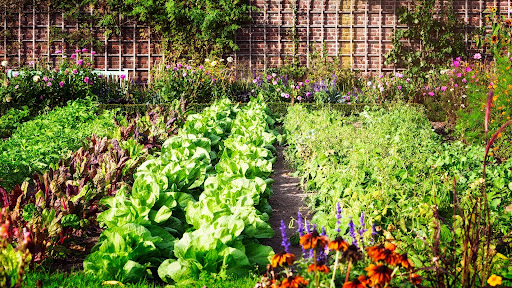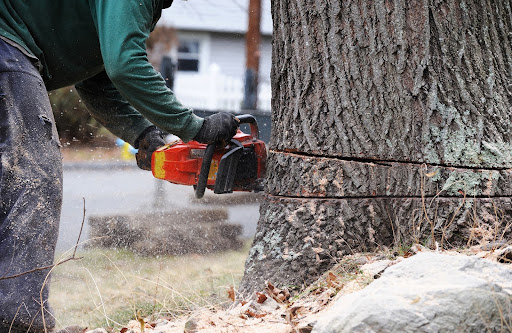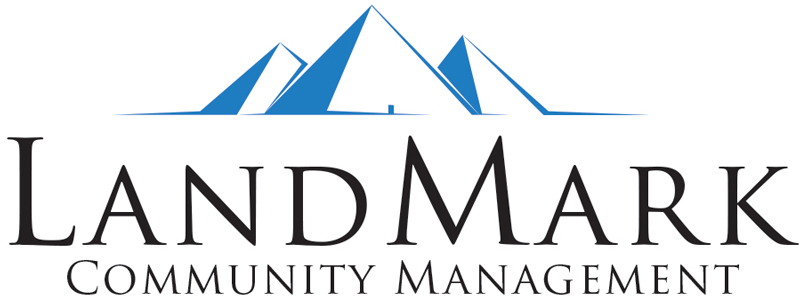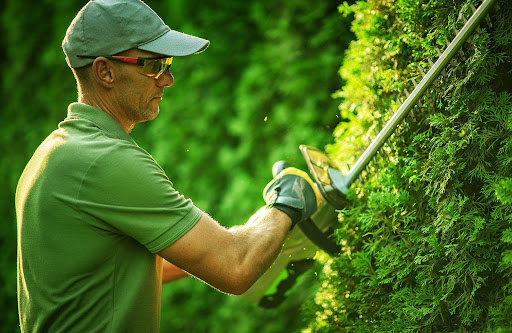When living in a homeowners association, landscaping responsibilities can be confusing. Understanding who is responsible for maintaining different areas is crucial. It depends on various factors, including the type of home and the governing documents.
Understanding Landscaping Responsibilities in an HOA
Landscaping responsibilities can vary widely depending on the HOA and the type of property. Homeowners and HOAs may share responsibilities, but it’s important to know the specifics. Associations typically maintain common areas like parks, walking paths, and entryways. However, homeowners may need to handle the landscaping around their individual homes.
Who is Responsible for HOA Landscaping?
To determine landscaping responsibilities, homeowners should first check state laws and their community’s governing documents. These two things should shed some light on who is responsible for what.
Check State Laws
In many states, some statutes regulate homeowners associations. However, only some of them address landscaping responsibilities. It is best to check the laws in your state to understand what homeowners are legally required to maintain and what HOAs are legally required to maintain.
Check Governing Documents
The HOA’s governing documents, specifically the CC&Rs, will outline landscaping responsibilities of both homeowners and the association itself. These documents detail who takes care of lawns, plants, trees, and common areas. Understanding these guidelines will prevent misunderstandings between homeowners and the HOA.
Two Types of Homes
Landscaping responsibilities also depend on the type of home in the community. There are two common categories: maintained homes and non-maintained homes. Each type comes with its own set of responsibilities.
1. Maintained Homes
In some communities, the HOA handles landscaping around individual homes. This is more common in communities designed for seniors or luxury developments. With this setup, homeowners may own their properties without worrying about their lawns or gardens. It is ideal for those who prefer less maintenance.
2. Non-Maintained Homes
In non-maintained homes, the HOA only takes care of common area landscaping. Homeowners are responsible for the upkeep of their yards, gardens, and driveways. This arrangement is typical in many suburban neighborhoods. In these cases, the HOA may still set guidelines on how yards should look, but homeowners must do the actual work.
Common HOA Landscaping Rules
Homeowners associations often have specific landscaping rules that homeowners must follow. These rules ensure the community remains attractive and well-maintained.
Common landscaping rules usually cover the following areas.
1. Plant Palette
Many associations provide a list of pre-approved plants, i.e., the only types of plants owners can grow. This plant palette ensures a consistent aesthetic across the community. Homeowners must choose plants that match the HOA’s guidelines. If they wish to plant something else, they will need the HOA’s approval.
2. Personal Gardens

Homeowners may want to plant personal gardens, but HOAs often set rules regarding size and location. Some HOAs require approval before homeowners can add garden beds or specific plants. This prevents the gardens from clashing with the community’s overall look.
Furthermore, gardens featuring fruits and vegetables may attract pests, so HOAs often discourage them.
3. Lawn Maintenance
Associations typically require homeowners to keep their lawns up to certain standards. These standards include mowing, watering, and trimming. When homeowners neglect their lawn maintenance, the HOA can issue a penalty as a monetary fine.
4. Lawn Furniture
Homeowners associations often regulate what types of furniture homeowners can place on their lawns. Items like benches, chairs, or decorative pieces must meet the community’s standards. This rule ensures that lawns don’t appear cluttered or unsightly.
5. Hardscaping
Hardscaping includes features like patios, walkways, and retaining walls. Homeowners may need HOA approval before adding or altering hardscaping elements. After all, these structures must blend with the community’s overall design. The HOA may also require owners to hire a licensed and insured contractor for the job.
6. Drip Irrigation
In areas with water restrictions, HOAs may encourage or require drip irrigation systems. These systems conserve water while simultaneously keeping plants healthy. Homeowners might need to install or maintain these systems to meet HOA requirements.
7. Fencing
Fencing is another area where HOAs often set guidelines. The height, color, and material of fences must comply with community standards. Homeowners typically need approval before installing or modifying any fencing.
8. Tree Removal

Associations usually have strict rules about removing trees. Trees contribute to the community’s overall appearance and can affect property values. Homeowners must often request permission before removing or replacing a tree on their property.
What Does an HOA Landscaping Committee Do?
Many HOAs have a landscaping committee that oversees the community’s landscaping rules and responsibilities. This committee ensures the community maintains its curb appeal and everyone follows the same guidelines.
Here are the responsibilities to expect of a landscaping committee in an HOA.
1. Reviews Guidelines
The landscaping committee reviews and updates the HOA’s landscaping guidelines. These guidelines ensure that homeowners understand what is allowed regarding plants, hardscaping, and yard maintenance.
2. Ensures Compliance
The committee ensures homeowners comply with landscaping rules and performs regular inspections to ensure that homes and common areas meet community standards. The committee may send a notice or issue a fine if a homeowner’s yard falls short. Most of the time, though, the committee refers the violation to the board, which takes action.
3. Enforces the Guidelines
If homeowners don’t comply with the landscaping rules, the committee may take enforcement actions. These actions could include fines or legal measures to ensure the community remains well-kept.
4. Reviews Requests for Approval
The committee reviews homeowner requests for landscaping changes, including approving new plants, fences, or garden structures. The goal is to ensure that these changes align with the community’s overall appearance.
5. Makes Recommendations to the HOA Board

The committee advises the HOA board on landscaping decisions. This includes suggesting updates to the plant palette or making changes to lawn maintenance rules, among other things. Their expertise ensures the community remains visually appealing.
The Final Word
Landscaping responsibilities in an HOA can vary depending on state laws, governing documents, and the type of home. Homeowners should understand these responsibilities to avoid potential conflicts with their HOA. Landscaping rules help keep the community attractive and uniform. Working with the landscaping committee ensures that the community remains a beautiful place to live.
Landmark Community Management provides exceptional HOA management services. Call us today at 512-569-5527 or contact us online to learn more!
RELATED ARTICLES:


